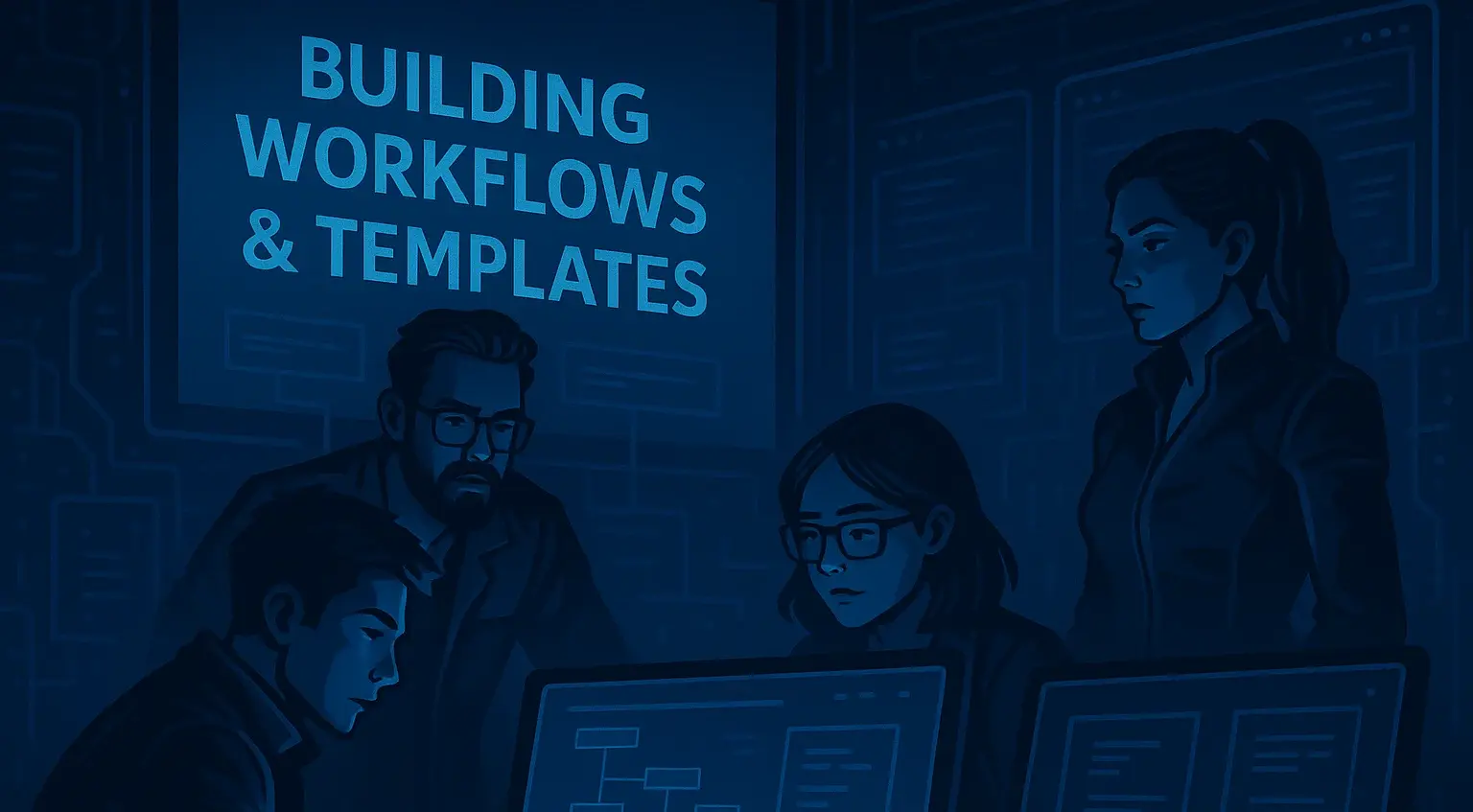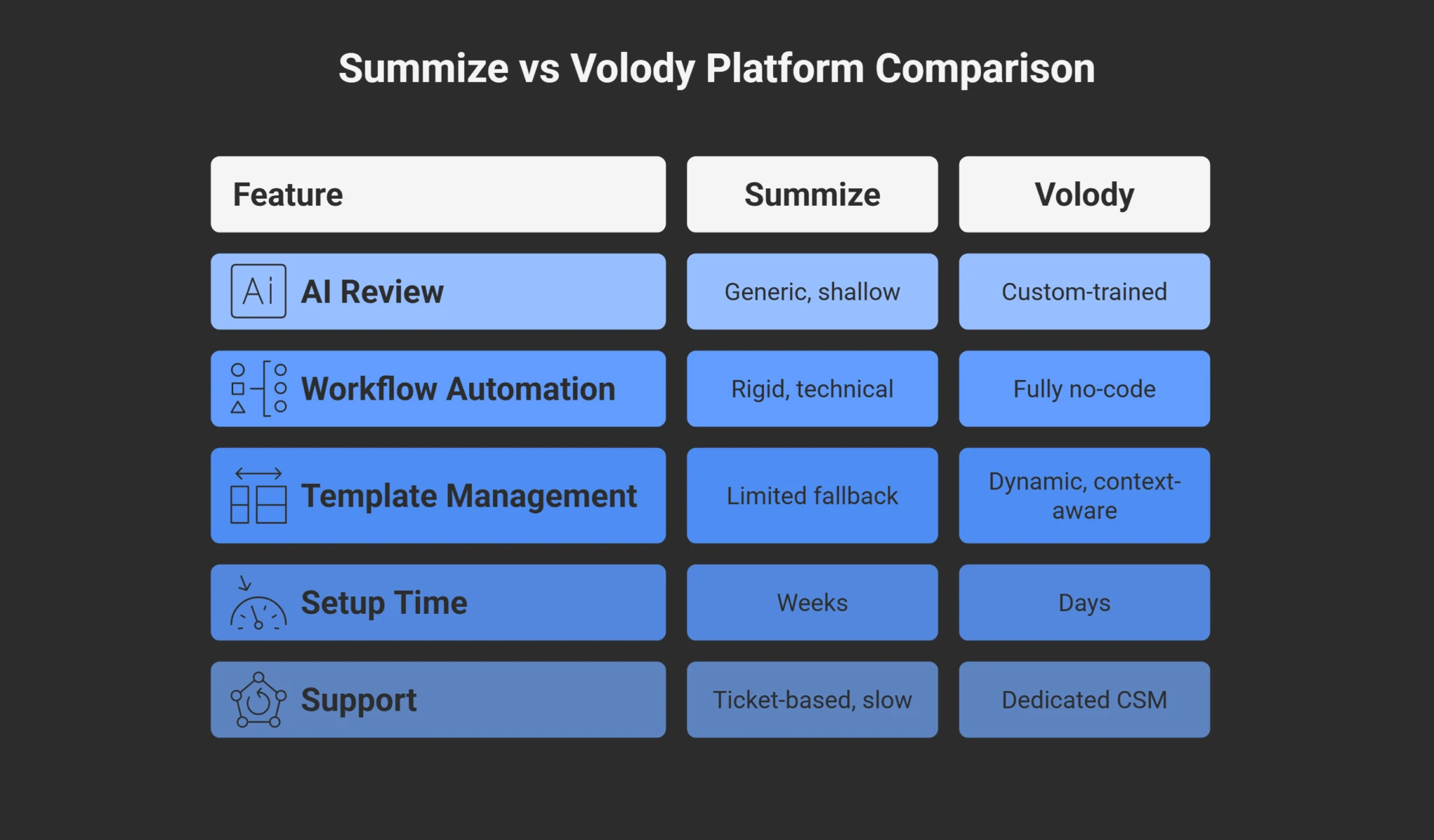Krunal Shah
Sep 16, 2025
Redlines, clause extraction, approvals, integrations—every CLM platform in 2025 claims to handle it all. But when the pitch decks fade, only one question matters: can it keep up with real legal work?
To find out, I spent 10 hands-on days using Summize, replicating the pace and pressure of an in-house legal team. From importing legacy contracts to testing AI redlining and configuring workflows, I pushed the platform across the scenarios legal ops teams face every day. so, here is the summize review:
Summize Evaluation Checklist: What I Looked For In A CLM

I built my checklist around six areas that matter most to a lean, modern legal function:
Category | What I’m Looking For |
|---|---|
1. AI Capabilities | Can the system extract obligations, flag risks, and redline based on our standards—not just keywords? Bonus: Context-aware intelligence. |
2. Contract Repository | A centralized, searchable system. Must support bulk legacy uploads, automatic tagging, smart filters (by clause, counterparty, renewal, etc.). OCR is expected. |
3. Contract Creation & Workflow | Support for reusable templates, fallback clauses, automated approvals, and version tracking. Should work across both sales and procurement teams. |
4. Integrations | Must integrate with tools like Outlook, Word, Teams, Salesforce, Slack, and Gmail. I shouldn’t need to leave my workflow to manage contracts. |
5. Usability & Adoption | Designed for business users—not just legal. Self-service should be intuitive so adoption doesn't stall. |
6. Pricing Transparency & Support | Clear pricing with no surprise API or feature-based add-ons. When I need support, I expect more than just a help article—ideally real-time assistance. |
First Impressions – Signing Up & Getting Started
Getting started with Summize wasn’t fully self-service. Although they offer a trial environment, gaining complete access required going through a sales-assisted onboarding process. This added some friction and delayed hands-on testing with actual contracts.
It took roughly a day to get my first contract up and running. An onboarding session was necessary to walk through the configuration basics, which helped, but highlighted that the platform might have a learning curve for users expecting immediate plug-and-play simplicity.
Days 1–3: Summize Setup, Onboarding & First Impressions

The initial setup process with Summize went more smoothly than I anticipated, though it still required a few hours of live support to configure core workflow elements like contract templates and clause automation rules. The support team was courteous and helpful, but responses leaned toward a reactive model—at times, I had to wait longer than expected for follow-ups on relatively simple queries."
"Summize can be slow to load - sometimes I wait for some time (5-10 mins) for 'requests' or 'repository' to appear" - Verified User in Legal Services (Source G2)
I also found that contextual help within the platform was minimal. Tooltips often lacked depth, and I frequently had to toggle back to external documentation to clarify next steps.
The setup process leaned heavily on self-navigation, and without a fully guided experience or a safe testing space, it occasionally felt like I was learning by trial and error rather than through a structured onboarding path.
Days 4–5: Uploading Legacy Contracts & Testing Repository

To test the repository’s strength, we uploaded around 10,000 legacy contracts. Upload speeds were reasonable, but the post-upload experience had some rough edges. File classification lacked the sophistication we were hoping for—there was no automatic detection of duplicates or outdated versions, so I had to manually filter out several irrelevant documents.
The OCR did its job, but tagging and metadata extraction didn’t always align with expectations. In some cases, metadata fields like renewal dates or counterparties were missed or inconsistently captured.
When it came to obligation tracking, results were mixed. While some clauses and key terms were picked up accurately, others—like payment timelines or autorenewal triggers—were overlooked entirely. This made it harder to rely on the system for accurate insights at scale.
Related Article: Contract Repository: How to Set it Up Effectively?
Days 6–7: Testing Summize's AI Capabilities

At first, the results were encouraging—it flagged a few common issues, such as missing indemnity language and NDA-related red flags. For straightforward agreements, the tool held up reasonably well.
However, as I introduced more complex or non-standard contracts, limitations started to emerge. The AI occasionally struggled with interpreting nested clauses or ambiguous phrasing. Redlining was functional but felt somewhat surface-level, lacking the contextual awareness or reasoning behind its suggestions.
While Summize's Review Pro may work well for lighter reviews or standard templates, more nuanced legal analysis will likely still need a human touch—or stronger customization capabilities.
Related Article: How to Use AI for Contract Management
Days 8–10: Building Workflows & Templates

I dedicated a couple of days to setting up workflows for common contract types like NDAs and vendor agreements. There was no drag-and-drop interface—instead, I had to configure each step manually. Defining approval conditions felt more like writing logic than mapping out a business process, which could be a hurdle for teams without technical support.
Clause libraries were available, which was helpful, but the system didn’t offer much in terms of intelligent automation—there were no dynamic clause suggestions or fallback insertions based on risk level or context.
Verified User in Legal Services: "The AI often struggles to pick out the right dates from contracts and add them to the calendar"
When it came to collaboration, the experience was somewhat fragmented. Out of the box, it relied on email notifications, and deeper collaboration required integration with tools like Microsoft Teams or Slack.
What Other Users Are Saying
"The repository view features are limited (especially for requestors and collaborators)." – G2
"Creating templates and making sure spacing and characters align is manual work." – Software Advice
"The Repository is very limited in terms of how items are organized and saved." – Capterra
Where Summize Fell Short For Me
AI felt superficial, with no contextual fallback or clause-based learning.
Repository search was flaky and missed metadata.
The workflow builder lacked no-code simplicity and was hard for business users.
The upload process didn’t handle legacy contracts well.
Support was friendly but reactive, not proactive.
These limitations made it hard to scale across our legal, procurement, and sales teams.
Feature Evaluation: Where Summize Stands
Feature Area | My Score (Out of 5) |
|---|---|
AI Clause Review | 2.5 |
Metadata & Search | 2.0 |
Template & Workflow Builder | 2.5 |
Integrations | 3.5 |
Onboarding & Support | 3.0 |
Related Article: Summize Pricing in 2025: Value vs. Cost for Legal Teams
So… What’s the Better Option?

If you’re a Microsoft-first team with a handful of simple contract types, Summize might still work. But if you’re a legal team handling volume, nuance, and change, Volody is simply better equipped.
Volody didn’t just meet our checklist—it anticipated it.
Why Volody Checked All the Right Boxes
After testing multiple platforms in real workflows, Volody stood out for its depth, speed, and ease of use:
Accurate AI: Clause-level extraction with built-in fallback logic.
No-Code Workflows: Visual drag-and-drop builder, no IT needed.
Easy Migration: Bulk import legacy contracts with smart tagging.
Transparent Pricing & Support: Flat rates + hands-on legal experts.
Rapid Deployment: Live in under a week.
Native Integrations: Out-of-the-box Salesforce, DocuSign, MS365.
Final Thoughts on Summize Review
Summize brings some smart ideas to the table, especially for teams looking to stay within the comfort of Microsoft Word and needing a quick way to extract clause summaries. For some legal ops teams, that lightweight approach might be exactly the right fit.
But in my experience, once contract volumes grow and workflows involve multiple teams, approvals, and evolving templates, that simplicity can become limiting.
That’s where Volody stood out. It handled complex workflows without forcing us to bend our processes. The AI felt contextual, the platform was configurable, and we never hit a wall when it came to scale or support.
About the Company
Volody AI CLM is an Agentic AI-powered Contract Lifecycle Management platform designed to eliminate manual contracting tasks, automate complex workflows, and deliver actionable insights. As a one-stop shop for all contract activities, it covers drafting, collaboration, negotiation, approvals, e-signature, compliance tracking, and renewals. Built with enterprise-grade security and no-code configuration, it meets the needs of the most complex global organizations. Volody AI CLM also includes AI-driven contract review and risk analysis, helping teams detect issues early and optimize terms. Trusted by Fortune 500 companies, high-growth startups, and government entities, it transforms contracts into strategic, data-driven business assets.








